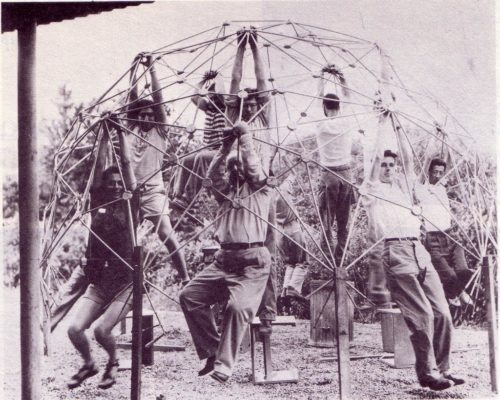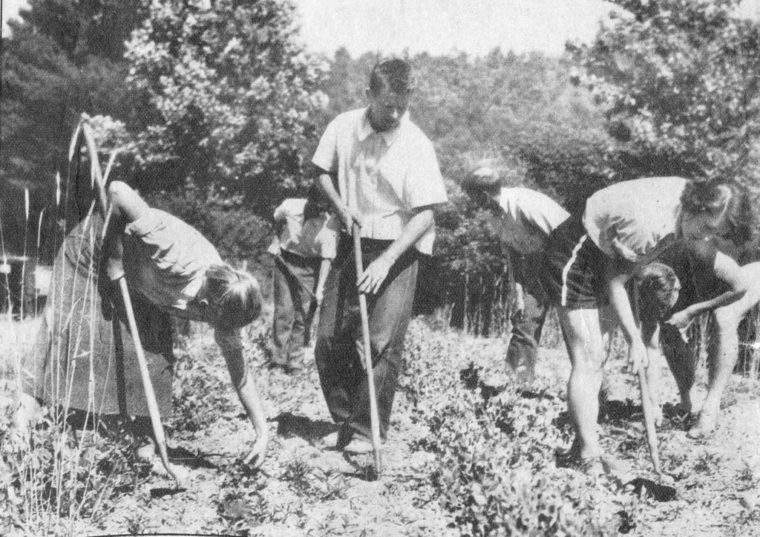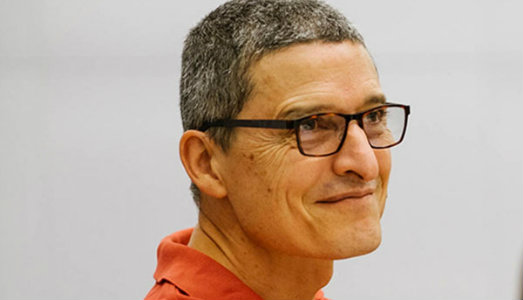Search
To search for an exact match, type the word or phrase you want in quotation marks.
A*DESK has been offering since 2002 contents about criticism and contemporary art. A*DESK has become consolidated thanks to all those who have believed in the project, all those who have followed us, debating, participating and collaborating. Many people have collaborated with A*DESK, and continue to do so. Their efforts, knowledge and belief in the project are what make it grow internationally. At A*DESK we have also generated work for over one hundred professionals in culture, from small collaborations with reviews and classes, to more prolonged and intense collaborations.
At A*DESK we believe in the need for free and universal access to culture and knowledge. We want to carry on being independent, remaining open to more ideas and opinions. If you believe in A*DESK, we need your backing to be able to continue. You can now participate in the project by supporting it. You can choose how much you want to contribute to the project.
You can decide how much you want to bring to the project.

When I was a beginner – in Rome, in the early 1980s – I often had the feeling that the consensus in the art milieu was that being an artist and being learned, and inclined to theorize, were somehow incompatible. Unlike writers, film directors or even musicians, visual artists or “painters” seemed to have to be a little ignorant in order to have access to forms of inspiration, genius, and non-conformity which would be impaired by rational or scientific approaches. This was probably a legacy of idealism, which viewed the artist as more of an irrational hero than a researcher. This image had been interiorized by artists themselves, without exception (apart from two people from whom I learned a great deal, Sergio Lombardo and Fabio Mauri), to the point that many of them seemed to pretend to be less learned than they actually were, and even boasted about it, making cruel jokes about the lack of creativity of those who claimed to be both artists and intellectuals. For somebody like me, who had no inspiration, no technical ability and only a few readings (mostly psychology books), this situation was paradoxical (how could somebody boast about their own ignorance?) and frustrating (how could I enter into any form of dialogue?).
Now, after some time, I have to admit that I not only greatly profited from this stereotype of the non–systematic artist, who was allowed to go adrift and off-topic, but, what is more important, that some theoretical anarchy, as opposed to rigid coherence, provides more room for freedom, a space where works of art can come about and move better, and can be more communicative.
Nonetheless, I am convinced that one should, and can, arrive at a non-systematic approach not by cutting corners and being slovenly, but by deconstructing theories only after having studied them, and by patiently constructing rational analyses, which are left to settle down and discussed with others.
There has been quite a change since the 1980s. Italian artists (again with few exceptions) no longer brag about their true or supposed ignorance, they no longer pose as misfits or bohemians, least of all as naïve, pure, brave heroes of the suburbs. The CVs of young artists often mention studies in critical theory, aesthetics, or complex research based on feminist (needless to say that in the previous model, the neo-expressionist artist invariably envisioned as male), environmentalist or post-colonial studies. This was unconceivable thirty years ago.
I view it as an essentially positive change. I think it was brought about primarily by the boost to knowledge provided by the Internet and search engines. In Italy, the attitude of professors of arts subjects in academies, or of art history in universities, when introducing students to international research,was almost invariably one of sarcasm and belittlement. The horizon of contemporary art was therefore deserted and depressive. At least, the Internet and Google unveiled that, beyond the horizon presented by those teachers, there was a world full of thought, discourse and possibilities. The problem is that, in the meantime, educational institutions have not changed, and in the past two decades this has led many young artists to look for study and work opportunities outside of Italy.
The inadequacy of training schools is therefore the central issue in a vicious circle that depletes creative energies and blunts critical minds, thus contributing to undermine the whole system of galleries, museums, magazines and independent spaces, which does not have the power to reach a wider public, precisely because it lacks a significant student population, which not only provides a “first rate public”, but also an irreplaceable force of mediation.
The emergence of a “great artist” does not depend on the quality of education: this is a general opinion that has always been stated more or less emphatically.This trivial truth, however, cannot erase the fact that the forms of knowledge and expression are increasingly becoming interdependent, and reticular relationships are forming among people and subject-related knowledge. I strongly believe that art education, more than anything else, can be a testing ground, on which to experiment – with a bit of Internet euphoria,and especially with a good deal of critical patience and humanism – the forms of knowledge and expression which can be accessed in the present. To illustrate this I will refer to the example I am most familiar with, the Visual Art workshop at Venice’s IUAV. This is a rather well-known project,which we owe to the determination and vision of Angela Vettese and Marco De Michelis, who, in the early 2000, designed a regular degree course addressed to both artists and curators, based on an equal division between theoretical subjects – taught by “internal” teaching staff – in the morning, and intensive workshops – held by “external”, often non-Italian, artists and curators – in the afternoon. The workshops had a duration of 12 weeks, and guided students from the early stages of designing a new project to creating and presenting it. In my experience, these workshops have been a model, sometimes particularly successful, of interaction between the theoretical (art history, aesthetics, semiology, psychology, etc.) and practical aspects of the actual artistic practice. In other words, students were introduced to interesting links between theories they were studying and their own (artistic or curatorial) project, seen as a case study.
I believe that these workshops are an example of art education and training that is successfully conveyed at three different levels – namely, besides theory, technology (video, photography, painting etc.) and pragmatics.
I would like to pause in particular on the latter. The first result of the workshop is the creation of a ‘table’, at which the participants sit down to form a group. You learn to share your project, to get over your embarrassment and talk about your still blurry idea, or a problem you faced on the way; most of all, you get used to circular thinking. This is crucial in any educational process, for both “teachers” and “learners”. Circular thinking rests on the logic of hospitality, in that the ideas of one person find a place in the mind of the other. The kind of learning that results from this is based on observing things from the point of view of the other, and by extension, you no longer see yourself as just a ‘self’ but always as a ‘self-with’ the other. While for some students this may lead to bonding, which in turn reinforces the mechanism, or simply to a cooperative effort, to join forces and ideas, for teachers the circular motion is a challenge to prove their ability to listen and understand the discourses and projects submitted by the participants. The teacher’s function thus changes from a guide into a host who welcomes the other’s ideas, incorporates and develops these ideas in order to better master them, and establishes connections between them so as to bring them back up more effectively in the group. At best, this circular motion of thought can lead to a situation in which a (good) idea that comes up is felt by everybody as their own, and is shared without jealousy, sometimes with enthusiasm: it is the start of a collective mind. Admittedly, these are always (and, I would say, luckily) temporary situations that cannot be reproduced on cue, but what you learn is often an unforgettable, brilliant possibility.
Of course the pragmatics of a workshop includes everything that is needed to create a collaborative network among students (for example, the exchange of electronic competence for woodwork; or of interpersonal abilities for the use of a photo camera), as well as the writing of a presentation text, the management of communication, finding an exhibiting space, setting up the exhibition, etc.
Finally, what should not be underrated is the importance of the different approach, which workshop teachers can offer to students; at IUAV, this difference sometimes causes bewilderment at first (just imagine how a student may feel when he or she begins a workshop with Vezzoli right after spending three months with Muntadas…), but in the long run it teaches us that artistic research is a source of multiple possibilities and moldable spaces, rather than of predetermined behaviors and roles.
To close this text I would like to briefly mention four points which I view as important, and which can provide possibilities for developing the idea of “art education”; in many respects, these four points center on the basic notion that education itself can become a testing and research laboratory without replacing the work – on the contrary, it can enhance its potential and expand the base of people involved.
 Students working on the farm at black mountain college, june 1936 | by davidsilver
Students working on the farm at black mountain college, june 1936 | by davidsilver
1) Performative didactics
Just to name an example, I am thinking about Black Mountain College. In that school, the simultaneous presence of teachers-artists (who are often friends with each other) whose research, although it had different disciplinary premises, was performance-oriented, resulted in the possibility of cross-breeding between a music course and a dance or painting course, which ultimately led to a shared artistic practice, a group work.
I am also thinking about expanding the already popular notion of performative lecture (associated with such artists as Dora García, Matt Mullican, Andrea Fraser, Walid Raad, Rabih Mrouè and many others), to develop actual courses in which specific philosophical, psychoanalytical or linguistic theories are studied, analyzed, developed, through experimental art sessions. For instance, you could combine a phonetics study with collective experiments in tactile perception or oral sound expression; or you could study the laws of market economy, trying to challenge the law of demand and offer by producing thousands of drawings (yes, I am thinking about one of my works…).
2) Localized pedagogy
The architectural, aesthetic, landscape, city-planning features of schools, universities, or other places in which educational activities take place, are generally regarded as independent of the contents that are studied there, and the ways in which they are conveyed. Localized pedagogy, on the other hand, proposes to reassert the importance and meaning of such features, so as to establish a connection between the time (class hours, seminar days, residency week) that students, teachers and participants in general spend in a certain place, and forms of attention, exploration and care of the place itself. A possible reference framework could be the notion of site-specific work,as opposed to the exhibition of an object in the neutral space of an art gallery or museum. According to this theory, any transmission of knowledge or critical mind can always be connected with the place in which it happens. Such an attempt at integrating the knowledge that is being acquired and the places that are being inhabited, could become a powerful memory aid and a cognitive reinforcement.
3) Community self-education
What is “separated” are not only the places, but also the times of school or university teaching, presuming that they are neutral and do not overlap with the time for eating, sleeping, playing, etc. Yet for those who participate in an educational group, community building can become a key element, not just to activate the mechanisms of hospitality and circularity I described above. Sharing the times, practices, expectations and dreams connected with an educational project, which means sharing something that is also related to the subject that is being studied and the modes of knowledge transmission, can create situations in which participants experience a course of classes as a true way of life, not unlike (or at least that is what we like to think) in the Garden of Epicurus, the Stoa, or Aristotle’s Peripathos.
4) The exhibition workshop
What I am about to say probably has to do with the fact that a growing number of artists are also teachers, and there is a growing demand for artists who can teach workshops for various types of users, from art school students to top managers in businesses or the public administration. I think that this type of practice, which allows artists to earn something without necessarily having to sell physical works of art, is on the increase, and is occupying, or even creating, an intermediate space between academic teaching proper and the exhibiting activity. In other words, it seems to me that, even in major events like international biennials, a new strategy is emerging, aimed at introducing the public to the workshop activity in its making – an activity which, starting from predetermined groups of participants or students, may try to get visitors to the exhibition involved in a collaborative effort, or in debate and collective cognitive production. Obviously, the circumstances of any Biennale are not at all favorable to this, primarily due to the limited exhibition hours. However, it is also true that the proliferation of exhibiting spaces, which is increasingly evident in major events, also means that places and people can be activated outside the regular opening and closing times, sometimes even independent of the purchase of a ticket. dOCUMENTA 13, in Kassel, provided numerous examples of this, from the community gym AND AND AND collective (Anastas and Gabri) to the capsule/“participatory open space” by Critical Art Ensemble, and the Huguenot House occupied and restored by Theaster Gates with the help of many friends.
In all these cases we have to do educational work experiments, which require extended periods of time, longer than we generally think is acceptable for visiting an exhibition, or participating in a conference, or a course of classes. And this may be the point. Art education requires first of all a new idea, and a new experience, of time, one that challenges the slavery of lack-of-time – a debt that is no less pervasive and ferocious than the financial one.
For education to take a real quantum leap, we need “citizenship time”.
Workshops, communities, scholé and performative didactics should be able not so much to “offer” this time, as to actually train each and every one of us in a new conception of time.
(Highlighted image: Necklace structure, black mountain college 1949. | by dodeckahedron)
Text originally published in: AA.VV. “That’s IT! Sull’ultima generazione di artisti in Italia e a un metro ottanta dal confine”. Montova: Corraini Edizioni, 2018

Cesare Pietroiusti chose to devote his early works to social psychology of relations in art. At the same time, the artist embarked on different social projects, which he considered not so much as separate endeavours but as a part of his oeuvre.
In recent years Pietroiusti has been focused on the economic dimension of art, namely, on the role of money as an artwork equivalent, a warrant of its value and/or the author’s signature. Pietroiusti does not sell his work, but instead promotes inflation and speculates with the rules of the art market.
Cesare Pietroiusti was born in 1955 in Rome. He studied medicine, received his doctoral degree in psychiatry and has been professor of fine arts at IUAV in Venice and at Lesley University, Boston. He lives and works in Rome whrere he was recently named president of il Palexpo di Roma.
"A desk is a dangerous place from which to watch the world" (John Le Carré)